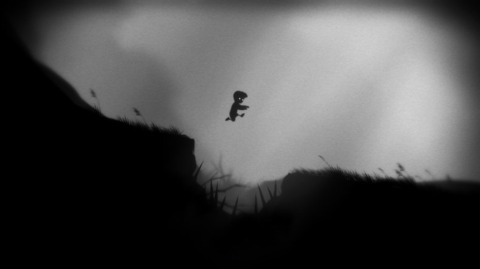Playdead on Limbo's puzzles
GDC 2011: Danish developer's lead gameplay designer opens up on the 2010 puzzle platformer, explaining how he envisaged players as both enemies and friends.
Who was there: Playdead's Jeppe Carlsen was the lead gameplay designer on Limbo, the Xbox Live Arcade indie hit that kicked off last year's Summer of Arcade promotion. Carlsen was the designer responsible for all of the puzzles in the game, joking to those who'd experienced them that "I'm the guy you wanted to slap in the face."

What they talked about: Limbo was a major critical and commercial success when it was launched in July 2010, earning a 90 Metascore on aggregation site Metacritic and clocking 600,000 unique leaderboard entries since launch. Part of the game's success was down to the simple yet fiendish puzzles, which often saw the protagonist killed in a variety of creative ways.
Playdead's Jeppe Carlsen was bullish on why he felt that the puzzles in the game worked--they were boiled down to as few elements as possible, but he felt it was still rewarding to see the pieces click together. Carlsen showed examples from modern 3D adventure games such as Uncharted 2 and 2008's Prince of Persia. He showed a puzzle in Naughty Dog's game where players had to climb a huge structure and line up mirrors to shine light onto certain objects.
"We felt like we were solving this incredible puzzle, but in my opinion, there was no puzzle to be solved," Carlsen moaned. On Ubisoft's game, he showed an example of a puzzle that had seven different mechanics that he felt made it too complicated. "I just can't be bothered to analyze this thing, so I just use trial and error," he said.
According to Carlsen, puzzle design should be a delicate balance between frustration and satisfaction. "I have this idea of how I want the puzzles to be played, almost like a script," he explained. "I want you to die, I want you to be slightly frustrated. However, the correct solution must be easy to execute and it should be very rewarding to see the puzzle pieces click together."
As players progressed through Limbo, the puzzles became more and more complex, culminating in a number of memorable set pieces that revolved around gravity. However, this gameplay mechanic was added only in the final stretch of production. Thanks to the development tools that Carlsen had at his disposal, which he spent half of his GDC session demonstrating, he was able to implement an idea he had when he was at home drinking coffee. "Pretty late in development, I came up with the idea that we might do some cool ideas with gravity. Honestly, in one or two minutes I had the mechanics I was after."
Quote: "Because we're not designing Uncharted [2], we want there to be a little bit of a trick to this." Carlsen made a sly dig at the ease of puzzles in Naughty Dog's adventure as he constructed an example puzzle for the GDC attendees. However, he also complimented the PlayStation 3-exclusive, saying, "I played through [Uncharted 2] a second time recently, and it's a phenomenal game."
Takeaway: Unless puzzles can be boiled down to a few constituent parts, they shouldn't be included in a game like Limbo, according to Carlsen. However, creating simple ideas still takes a great deal of time--it took three and a half level designers three years to design all of the puzzles in Limbo, which is a relatively short game.
Got a news tip or want to contact us directly? Email news@gamespot.com
Join the conversation